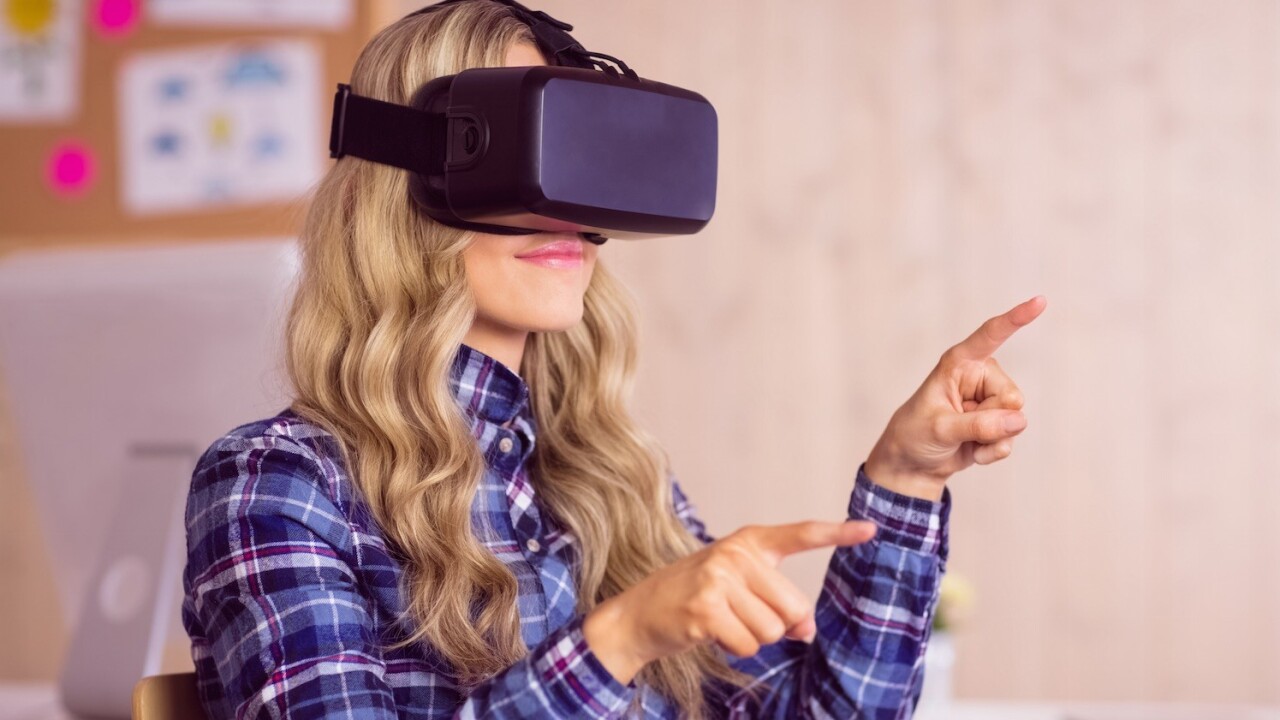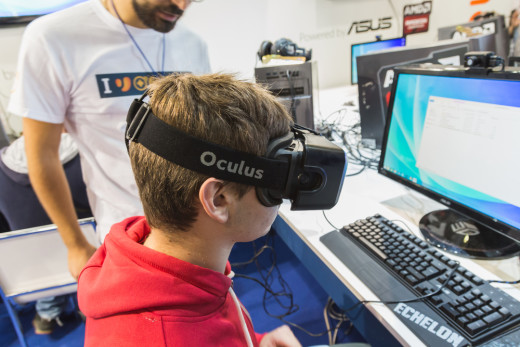
The consumer version of the Oculus Rift, one of the most popular virtual reality (VR) headsets to-date, is now available for pre-order on the Oculus website. This means consumers are now one step closer to fully immersive virtual reality on their computers, however we still have a long way to go until VR becomes mainstream.
A few months ago, our office purchased an Oculus Rift developer kit because we wanted to experience the technology first-hand and see if it really was what it was hyped up to be. One of the partners here at Elevator Fund tasked me with brainstorming what could be done with it, so I went from computer to computer, and to my dismay, I was unable to get it working.
It was not due to lack of effort, but rather a lack of computing power.
The Rift requires a very powerful, and relatively expensive, graphics card (an Nvidia Geforce 970 or an AMD 290 or better). Despite working in an office full of technology startups, I found that none of them had the hardware needed to run the Rift, and according to Steam’s recent Hardware Survey, only four percent of PC users have an Nvidia 970 to effectively run the Oculus.

When I first tried out Glass, over two years ago, I was very impressed by the technology (as was much of the global tech scene) and I thought that it had a chance of being the forerunner to some very innovative augmented reality (AR) applications.
Today, only the most dedicated die-hards continue to wear the original Glass out in public, and the AR technology trickle-down effect has been much slower than expected. This could be attributed to many different things, but I am sure that the complexity, high cost and lack of subtlety when wearing Glass were partially to blame.
While Google Glass was cool, it did not solve any major problems that were screaming for a solution, and thus people had no obvious need for it. This may change with news of Google’s new FCC filing for Glass 2.0, however I am not so sure we will see mass adoption of Glass any time soon.

While pre-orders for the consumer version are now open, it is still likely that it will be similar to the developer version in that it will be expensive, quite complex (requiring high end and costly hardware), and the only real world problem it seems to solve relates to a dilemma amongst avid gamers as to whether they should play the latest version of Fallout using an HD monitor or an Oculus Rift.
So, while some of the the aforementioned issues may minimized in the consumer version, it is likely that it will still be reserved for developers, owners of high powered desktops, and computer gamers, leaving VR off the “must have” shopping list of most consumers.
Despite this, I think that there is a bright future for virtual and augmented reality.
As with any new technology there are growing pains, and the initial products rarely match up to the vision of the inventor or early adopters. The first mobile phone was released in 1983 and weighed two pounds, making it a far cry from a Nokia brick phone from the 90’s, let alone an iPhone 6s.

In an interview with Mark Zuckerberg and Michael Abrash, chief scientist at Oculus, Zuckerberg described how a new piece of innovative technology comes about every 10 to 15 years that changes the way we do things. Most recently it was the smartphone and social networking, before that the internet and going back to the lightbulb and so on.
Aside from the early adopters, most look at new technology with a high level of scepticism until it reaches a tipping point and becomes mainstream. According to Zuckerberg, VR is that new technology that will fundamentally change the way we do things.
While I do not think that the first consumer version of the Oculus Rift is going to go mainstream, and that it is unlikely that people will be walking around wearing VR/AR headsets any time soon, I agree with Mr. Zuckerberg in that virtual and augmented reality presents a massive opportunity, especially for the companies that are leading the pack when it comes to VR development.
I see the consumer Oculus Rift ushering a day that that will have VR and AR seamlessly integrated into our lives to enhance and enrich enhance our everyday experiences by allowing us to capture and relive our best experiences with a whole new world of possibilities. So, while I may need to order a new graphics card for my office computer, I am sure that there will eventually be a time when virtual reality technology will become as simple and commonplace as smartphones are today.
Read next: This startup puts the ‘reality’ in Virtual Reality with VR livestreams
Get the TNW newsletter
Get the most important tech news in your inbox each week.





